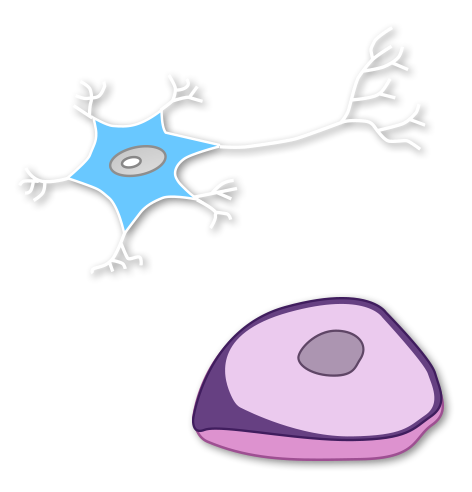
Differentiate!
The Stem Cell Card Game
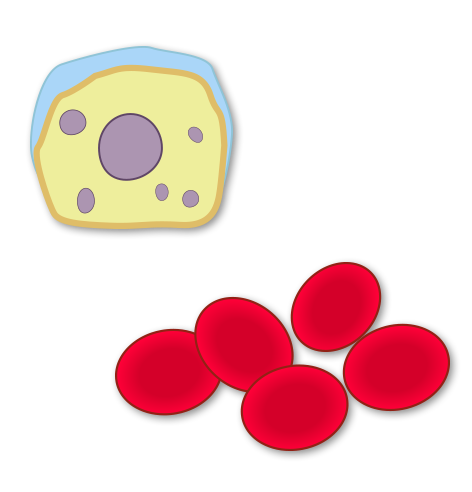

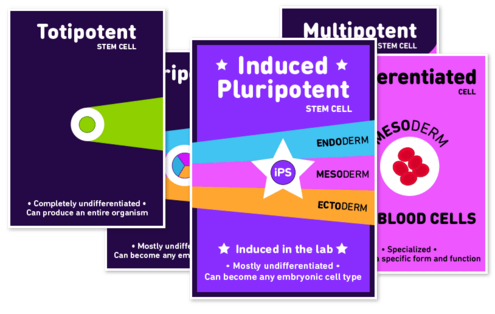
In this game, you are stem cell scientists. Be the first to grow three new kinds of cells in your lab to win!
As you play, you’ll explore how stem cells differentiate, or develop, into various specialized cells in the human body and in the lab.
Download, print, and make the card game:
This has everything you need to know to play.
Print these card sheets on card stock or heavy paper.
Print this pattern on the other side. Then cut out the cards.
Everyone has their own lab. Print one sheet per player.
Why are scientists studying stem cells?
If someone were badly burned or had a genetic blood disease, imagine if scientists could repair the damaged skin or blood with new cells. This is the promise of stem cells! Scientists around the world are studying stem cells to learn how they work and how they might be used to repair bodies and cure disease.
What's unique about stem cells?
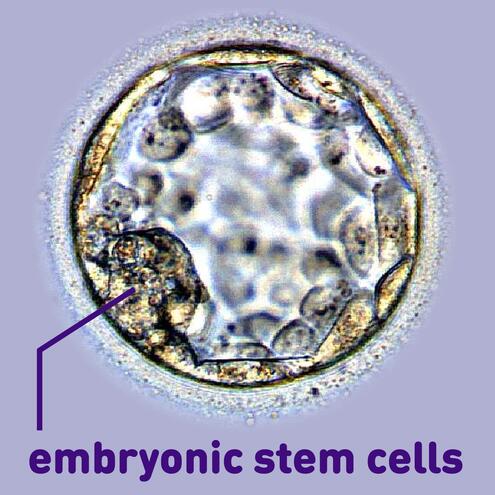
Embryonic stem cells can develop into any kind of cell in the human body.
All the cells in your body started as stem cells. As a stem cell grows, it differentiates, or develops, into a specialized cell that has a specific function. So a stem cell can become a red blood cell that carries oxygen, a nerve cell that sends messages throughout your body, a skin cell that protects your body, and many more.
The best kind of stem cell to help scientists with their research is an embryonic stem cell. That’s because this type of stem cell is capable of differentiating into the most different kinds of cells. But embryonic stem cells are not easy to obtain.
What are scientists discovering about stem cells?
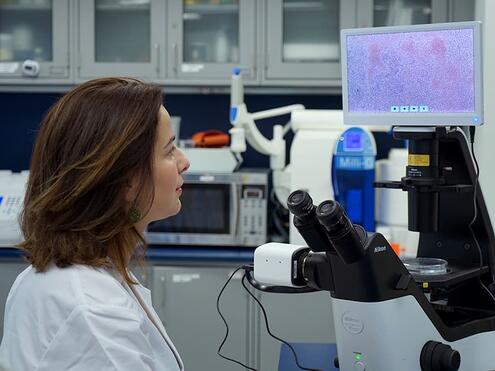
In the lab, scientists can transform ordinary adult cells into a new kind of stem cell. They, like embryonic stem cells, can develop into any cell in the human body!
In 2012, Dr. Shinya Yamanaka and his team made an important discovery. They figured out how to induce, or transform, a differentiated cell from an adult human back into a stem cell. Dr. Yamanaka named them “induced pluripotent stem cell,” or iPS. And then they grew this stem cell into a completely different type of differentiated cell!
Now scientists around the world can use this new type of stem cells for their research. They hope to learn even more about stem cells and figure out how they can be used to repair bodies and cure disease.
How do stem cells grow and differentiate—in the human body and in the lab?
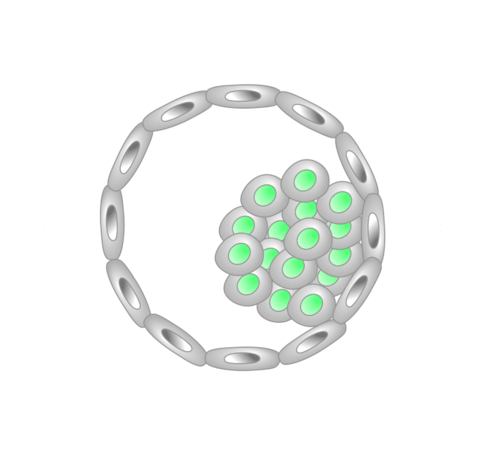
Totipotent Stem Cell
A human life begins as a fertilized egg. That egg divides, and then divides again, creating new cells. At first, the cells in the embryo are a type called totipotent stem cells. Some of these cells become the placenta, which nourishes the developing embryo. Others become the embryo itself.

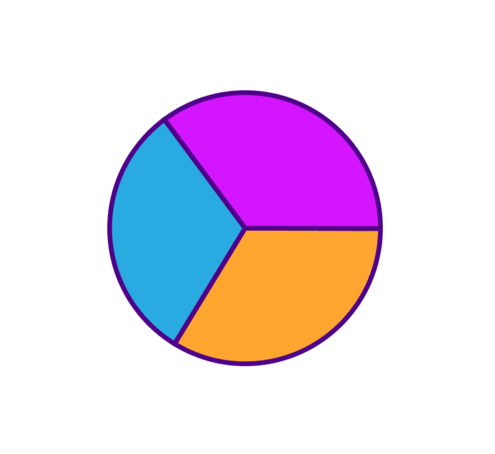
Pluripotent Stem Cell
The early embryo is made up of pluripotent stem cells. These cells can develop, or differentiate, into almost any kind of cell!

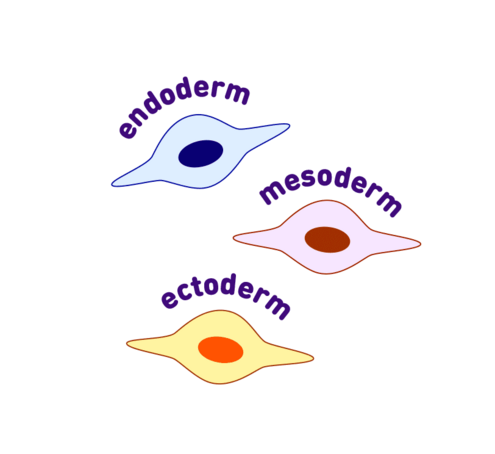
Multipotent Stem Cell
The developing embryo produces chemical signals that tell its pluripotent stem cells to sort themselves into one of three germ layers: ectoderm, mesoderm, or endoderm. The cells in these layers are multipotent stem cells. They can still turn into other types of cells—but only the types within their germ layer.

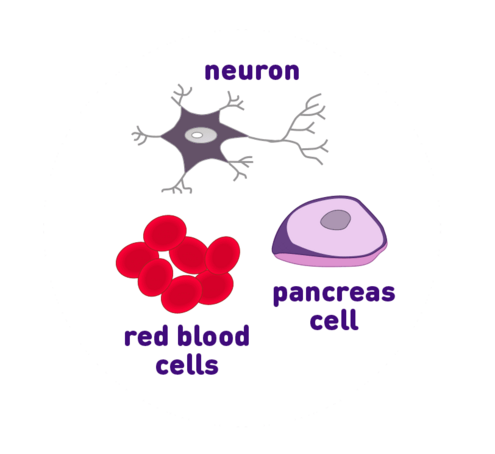
Differentiated Cell
As the embryo develops into a fetus and then a baby, the cells in the three germ layers grow into different organs and tissues in the body. A differentiated cell is a specialized cell with a specific function, like a neuron or skin cell (from the ectoderm layer), lung and pancreas cells (from the endoderm layer), and heart muscle and red blood cells (from the mesoderm layer).


Induced Pluripotent Stem Cells (iPS)
In the lab, scientists can transform ordinary adult differentiated cells back into a new kind of stem cell. They are called induced pluripotent stem cells (IPS). Scientists can then grow an iPS into a completely different kind of cell by following the same process: the iPS sorts into one of three germ layers and then differentiates into a specialized cell within that layer.
Image Credits:
embryonic stem cell under microscope, Nina Sesina/CC BY-SA 4.0; stem cell scientist, © AMNH/I.Romero; embryo icon, AMNH; mulitpotent cell icons, AMNH/I.Romero; neuron, pancreas cell, and red blood cell icons, AMNH/I.Romero.




 Biodiversity
Biodiversity
 Brain
Brain
 Genetics
Genetics
 Marine BiOLogy
Marine BiOLogy
 MicrobiOLogy
MicrobiOLogy
 PaleontOLogy
PaleontOLogy
 ZoOLogy
ZoOLogy
 AnthropOLogy
AnthropOLogy
 ArchaeOLogy
ArchaeOLogy
 Astronomy
Astronomy
 Climate Change
Climate Change
 Earth
Earth
 Physics
Physics
 Water
Water
